6 Types of Hummingbirds in Michigan (With Pictures)
Last Updated on
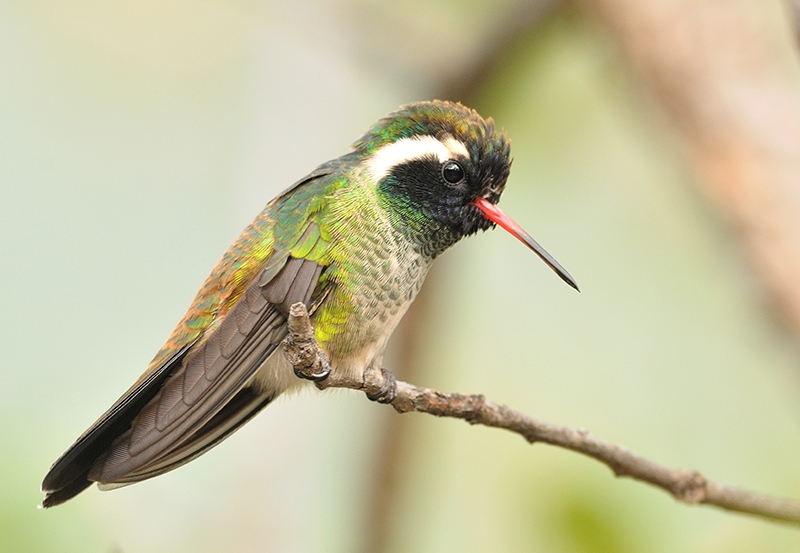
With over half of the state being covered in forests1, it is no wonder that Michigan has such beautiful wildlife that calls this state home. Some of the best birding sites are found in the Upper Peninsula, and hummingbirds are one of the few birds that call the Wolverine State home. Listed below are six of the most common types of hummingbirds here, so keep reading to learn more about each one.

The 6 Types of Hummingbirds in Michigan
1. Ruby-Throated Hummingbird (Archilochus colubris)
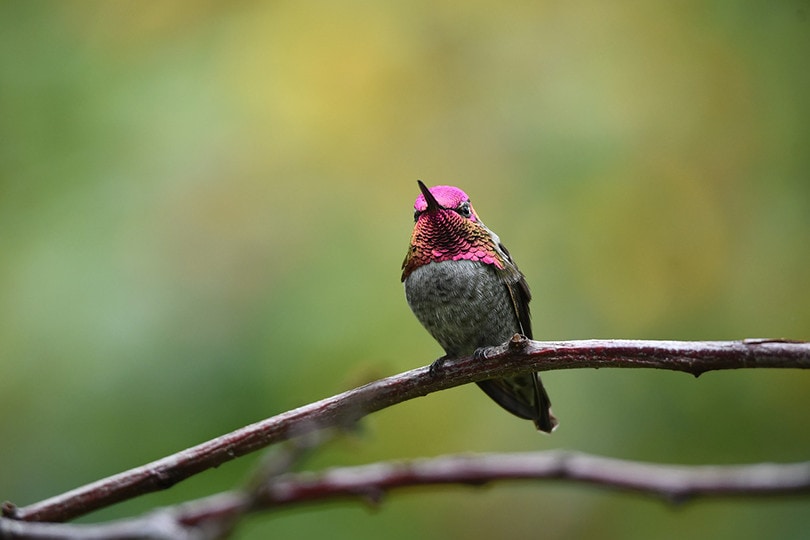
| Lifespan: | 5–7 years |
| Size: | 2.8–3.5 inches |
| Weight: | 0.07–0.2 ounces |
| Wingspan: | 3.1–4.3 inches |
| Conservation status: | Least concern |
These beautiful hummingbirds are named after their orange-red throat that is present in the males. This is likely to be the hummingbird that you see most often in Michigan, although you may get lucky enough to spot another.
Unlike the males, the females have white throats. Both sexes, however, have metallic green on their upperparts with pale grey underparts. The males are slightly smaller than the females. While they do migrate south for winter, you will be able to find them in all areas of the state during spring and summer.
2. Anna’s Hummingbird (Calypte anna)
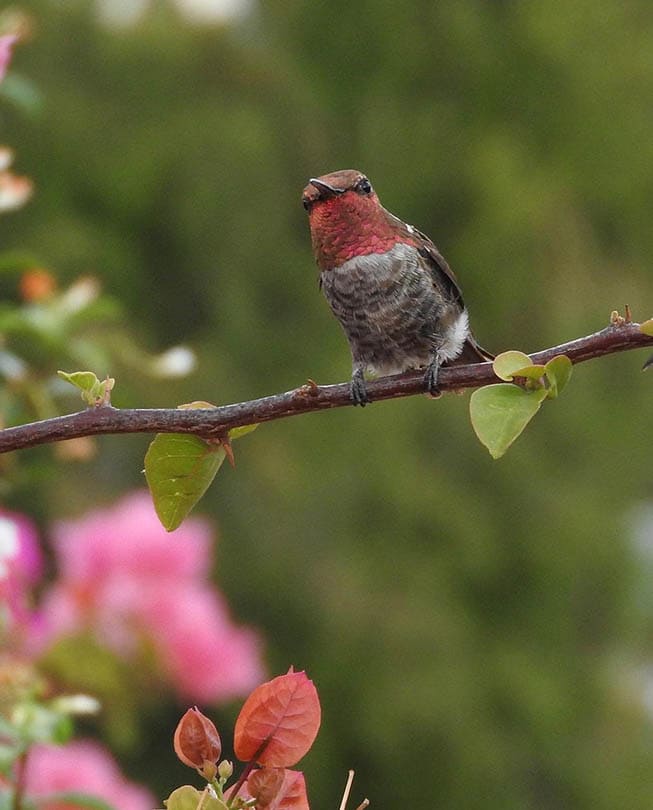
| Lifespan: | 3–12 years |
| Size: | 3.9–4.3 inches |
| Weight: | 0.1–0.2 ounces |
| Wingspan: | 4.7 inches |
| Conservation status: | Least concern |
The Anna’s Hummingbird has a stocky little bottle with green and grayish-brown plumage. The males are brighter with an iridescent pink head and throat. They often feed on nectar, tree sap, and insects and are considered important pollinators in the area. They migrate short distances and are commonly found in open woodlands, shrublands, and savannahs.
3. Rufous Hummingbird (Selasphorus rufus)
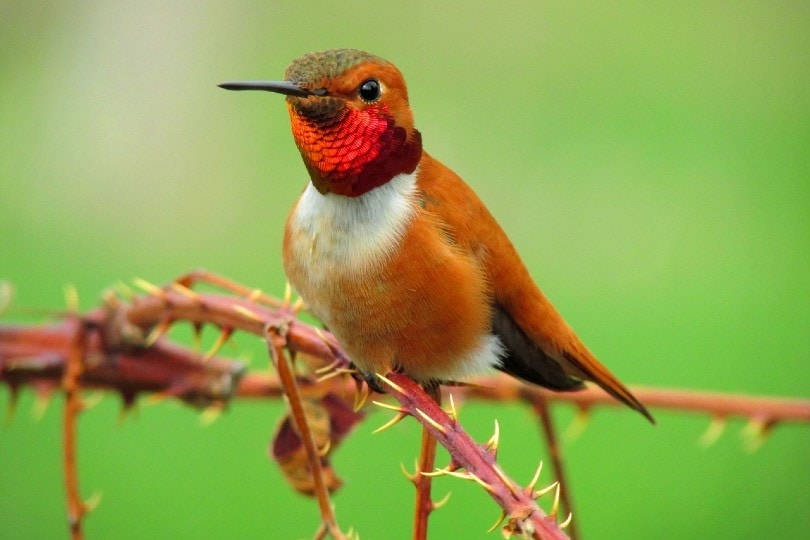
| Lifespan: | 8 years |
| Size: | 2.8–3.5 inches |
| Weight: | 0.071–0.176 ounces |
| Wingspan: | 4.3 inches |
| Conservation status: | Near-threatened |
One thing that the Rufous Hummingbird is known for is its incredible flying skills. These birds are long-distance migrators. They have the longest migration routes of any other hummingbird species.
The Rufous Hummingbird is typically found in open forests, woods, shrubby meadows, and thickets with their nests being high up in coniferous and deciduous tree branches. The males have an orange throat and white breasts, while the females have green upperparts and white underparts. Their numbers are mostly being affected due to pesticides and climate change, thus being classified as “near-threatened” by the International Union for Conservation of Nature (IUCN).
4. White-Eared Hummingbird (Basilinna leucotis)
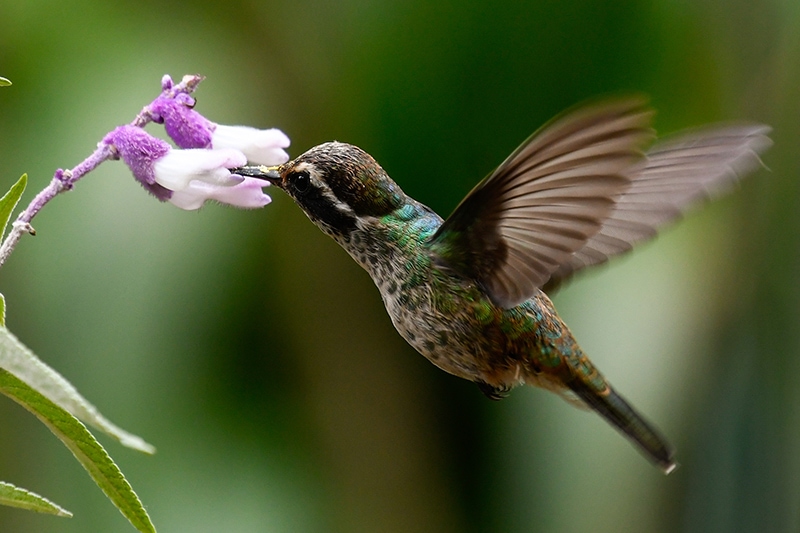
| Lifespan: | 3–12years |
| Size: | 5.5–3.9 inches |
| Weight: | 0.1 ounces |
| Wingspan: | 4–5 inches |
| Conservation status: | Least concern |
Next on our list is the White-Eared Hummingbird. With a sweet face and white stripes that extends over their ears and onto their necks, it’s easy to imagine how these birds got their name. Their plumage is mostly brown, although there are iridescent shades of turquoise and violet on their breast, throat, face, and upperparts. They also have a red curved bill with a black tip on it. However, females are obviously less colorful than the males.
White-Eared Hummingbirds are mostly common in the southwestern parts of the US, although they can occasionally be spotted in Michigan feeding on the sugary nectar of flowering plants and shrubs.
5. Broad-Billed Hummingbird (Cyanthus latirostris)

| Lifespan: | 9 years |
| Size: | 3.1–3.9 inches |
| Weight: | 0.1 ounces |
| Wingspan: | 5.1 inches |
| Conservation status: | Least concern |
The Broad-Billed hummingbird is a small species with very colorful plumage. It is named for its broad bill and is actually close in appearance to the White-Eared Hummingbird. The males are a brighter green color with a blue throat patch and red bill. Females are more of a lime green color on their upperparts with gray-brown colors below.
While the Broad-Billed Hummingbird is native to Mexico and the Southern US, they still visit northern areas from time to time, including southern Michigan.
6. Mexican Violetear Hummingbird (Colibri thalassinus)

| Lifespan: | 12 years |
| Size: | 3.8–4.7 inches |
| Weight: | 0.2 ounces |
| Wingspan: | 4.7 inches |
| Conservation status: | Least concern |
The last hummingbird to make our list is the Mexican Violetear. They may be native to Mexico and Central America, but you can occasionally spot one in Michigan from time to time. They inhabit overgrown clearings, forest edges, scrublands, woodlands, and gardens. This is a brightly colored species with metallic green all over their bodies and violet patches on the breast and ears.

Conclusion
While you’re far more likely to spot a variety of hummingbirds in Mexico and Central America, there are still a few species that you can find hanging out in the northern state of Michigan. Each of these hummingbirds is absolutely stunning, and some might have even been on your birdwatching list for some time now. Hopefully, now that you know a little more about the hummingbirds that come to Michigan, you can check a few off your list.
See Also: 19 Common Types of Sparrows in Michigan (With Pictures)
Featured Image Credit: Takahashi Photography, Shutterstock
Table of Contents
About the Author Hallie Roddy
Hallie is a proud nature and animal enthusiast and has been for as long as she can remember. She attributes her passion for the environment and all its creatures to her childhood when she was showing horses on weekends and spending her weeknights devoting her attention to her pets. When Hallie isn’t using her degree in English with a writing specialization to spread informative knowledge on pets and animals, you can find her snuggled up on the couch reading books or watching nature documentaries with her own pets.
Related Articles:
Monocular vs Telescope: Differences Explained (With Pictures)
10 Types of Hummingbirds in Arkansas (With Pictures)
8 Types of Hummingbirds in Nebraska (With Pictures)
5 Types of Hummingbirds in Idaho (With Pictures)
3 Types of Hummingbirds in Mississippi (With Pictures)
8 Types of Hummingbirds in Kansas (With Pictures)
5 Types of Hummingbirds in West Virginia (With Pictures)
5 Types of Hummingbirds in Ohio (With Pictures)
